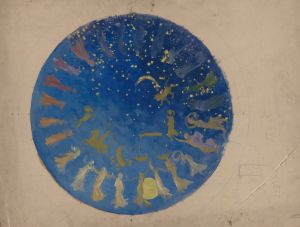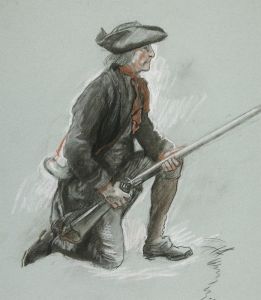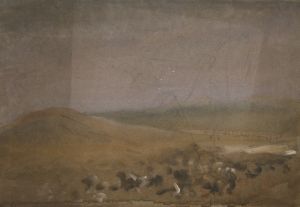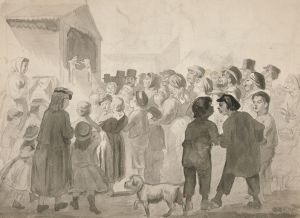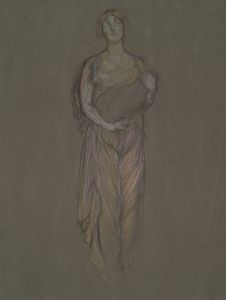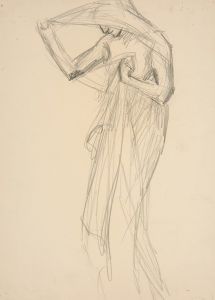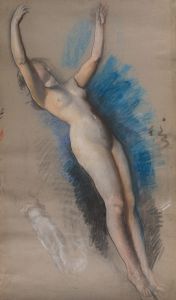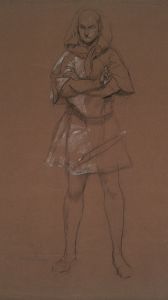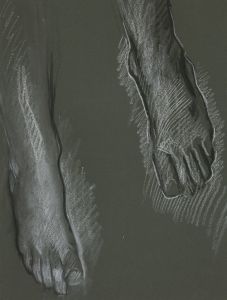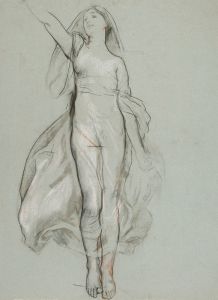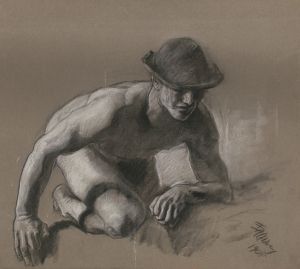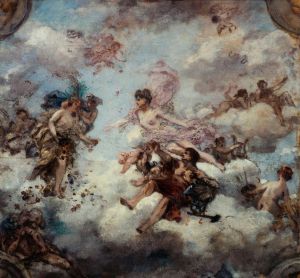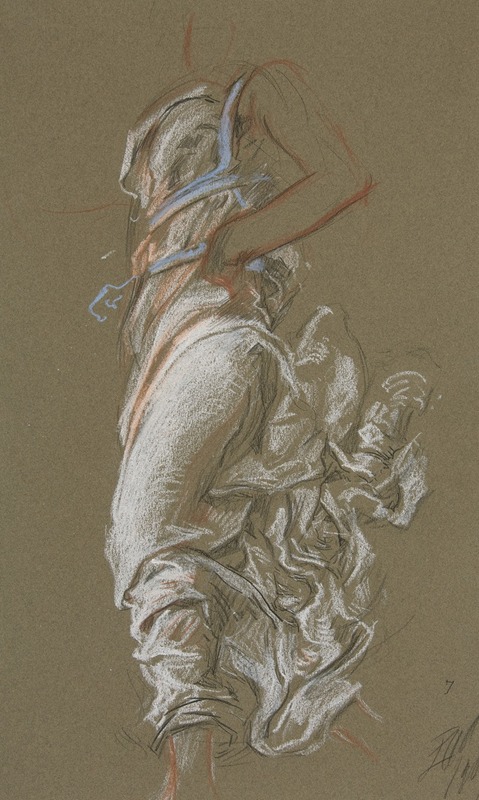
Study for figure of 7 am in ‘The Hours’ ceiling at the state capitol building in Harrisburg, Pennsylvania
A hand-painted replica of Edwin Austin Abbey’s masterpiece Study for figure of 7 am in ‘The Hours’ ceiling at the state capitol building in Harrisburg, Pennsylvania, meticulously crafted by professional artists to capture the true essence of the original. Each piece is created with museum-quality canvas and rare mineral pigments, carefully painted by experienced artists with delicate brushstrokes and rich, layered colors to perfectly recreate the texture of the original artwork. Unlike machine-printed reproductions, this hand-painted version brings the painting to life, infused with the artist’s emotions and skill in every stroke. Whether for personal collection or home decoration, it instantly elevates the artistic atmosphere of any space.
Edwin Austin Abbey, an American muralist and illustrator, is renowned for his significant contributions to public art in the United States, particularly his work in the Pennsylvania State Capitol in Harrisburg. Among his celebrated works is the "Study for Figure of 7 am in ‘The Hours’ Ceiling," which forms part of a larger mural project within the capitol building. Abbey's murals are a testament to his skill in combining allegorical themes with historical and cultural narratives, a hallmark of his artistic style.
The Pennsylvania State Capitol, completed in 1906, is an architectural marvel that houses a wealth of artistic treasures. Abbey was commissioned to create a series of murals for the building, which included the intricate and symbolically rich "The Hours" ceiling. This particular mural is located in the rotunda, a central and prominent space within the capitol, designed to inspire awe and reflect the grandeur of the state’s governance.
"The Hours" ceiling mural is a complex allegorical representation of the passage of time throughout the day. Abbey's "Study for Figure of 7 am" is a preparatory work for one of the figures in this mural. The study showcases Abbey’s meticulous approach to composition and his deep understanding of allegorical symbolism. In this context, the figure of "7 am" likely represents the early hours of the day, a time associated with awakening and renewal, though the specific attributes and symbolism of this figure in Abbey's work are not extensively documented.
Abbey's work on the Pennsylvania State Capitol was part of a broader movement during the late 19th and early 20th centuries to incorporate fine art into public buildings, reflecting the ideals of the American Renaissance. This movement sought to express national identity and civic pride through art and architecture, drawing inspiration from classical and European traditions. Abbey, with his background in illustration and his experience in England, where he had worked on similar projects, was well-suited to contribute to this vision.
The "Study for Figure of 7 am" exemplifies Abbey’s ability to blend narrative and decorative elements, creating a harmonious and thought-provoking piece. His use of color, form, and composition in the study reflects his training and influences, which include both the Pre-Raphaelite Brotherhood and the broader European academic tradition. Abbey’s studies were crucial in planning the final mural, allowing him to experiment with different poses, drapery, and expressions to achieve the desired effect.
Edwin Austin Abbey’s murals in the Pennsylvania State Capitol remain an important part of American art history, illustrating the role of public art in shaping cultural and historical narratives. The "Study for Figure of 7 am" is a valuable piece of this legacy, offering insight into Abbey’s creative process and the broader artistic trends of his time. Through his work, Abbey has left an enduring mark on the cultural landscape, contributing to the rich tapestry of American public art.





